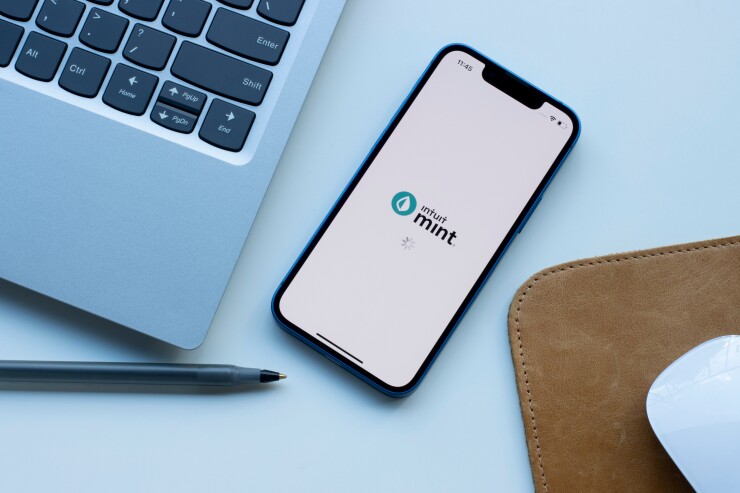Want unlimited access to top ideas and insights?

Mint, a pioneer in personal financial management technology,
Intuit announced this week that it would
Intuit is encouraging Mint users to
But Intuit said in a release that the platform won't provide Mint's bread-and-butter monthly and category budget feature.
"Is it a surprise they got rid of [Mint] because they had to and it wasn't super profitable? No, that's probably basic business," Lerner said. "But the fact that they didn't try to find a way, at least that we know of, to consolidate and put those two things together … that's the big surprise here to me, is that we're not seeing that here."
When Mint launched 16 years ago, it was a leader in aggregating and centralizing financial data, planting early seeds of open banking. Now, the fintech space is crowded with companies looking to serve similar purposes, like Monarch, a subscription-based site that
Monarch co-founder and CEO Val Agostino, who was also Mint's first product manager in the mid-aughts,
Intuit is shutting down one of the most popular personal financial management sites of its time — which attracted millions of users despite its counterintuitive approach to accessing consumer data.

Tyler Brown, a senior analyst at CCG Catalyst, said the Mint shutdown was a "long time coming," because PFM has evolved beyond just budgeting and cash flow. Financial management products are about engagement, he said. Products can get users to repeatedly return by offering personalized solutions based on a complete view of their financial data, like Credit Karma's credit score tracking.
"PFM has forked in a couple of different ways over the last few years," Brown said. "It's not just finding ways to scrape data from the bank in order to centralize it in a way that makes it useful to the customer. It's about being able to extract data from a bank, insurance company or another fintech company, and then to process it in a way that's going to be useful to the customer."
According to Javelin research, only about 6% of consumers use a third party for financial planning, but Lerner said that doesn't mean 94% are using their banks. He said he thinks most people aren't budgeting formally, but traditional financial institutions could attract some customers with options similar to neobanks.
Lerner said that he often advises banks to invest in their PFM options, and the marketing of those options, not just for a financial return, but for engagement. He said banks are often focused on wallet share, but should also be thinking about "share of mind," which he defines as where customers are thinking about putting their money.
"If you're their bank, and they're not thinking about you first when they're thinking about money … that has got really prominent repercussions," Lerner said.
Most major banks offer in-house budgeting or financial planning solutions, and many smaller banks provide those services through fintech partners. For example, Bank of America launched Life Plan in 2020, Wells Fargo rolled out LifeSync earlier this year and JPMorgan Chase introduced Wealth Plan in 2022.
Lerner said financial planning products aren't complete without including all of a consumer's data, like retirement plans and student loans. He added that as data aggregation and analysis technology has evolved, consumers want more out of their PFM product, like financial advice and next best steps.





